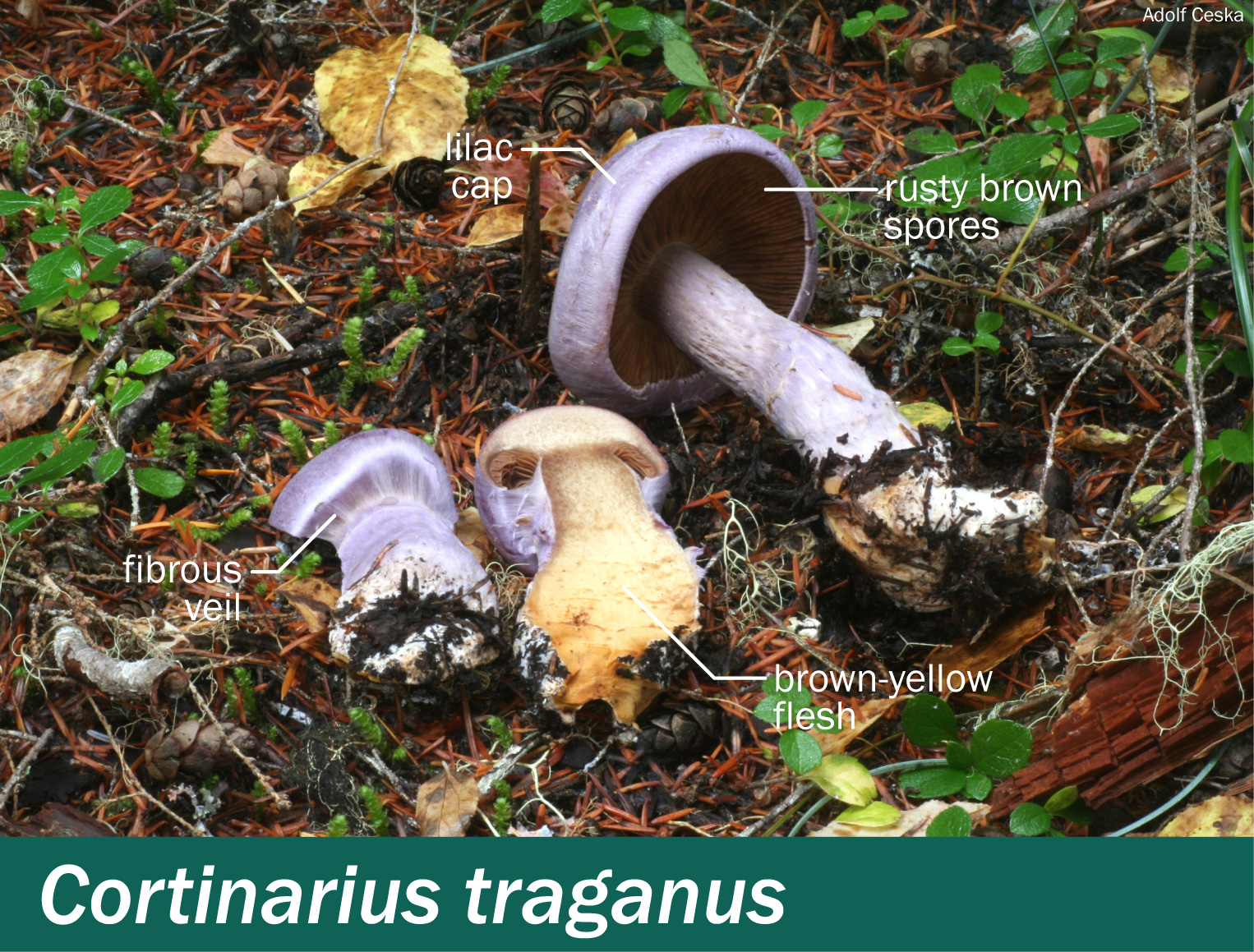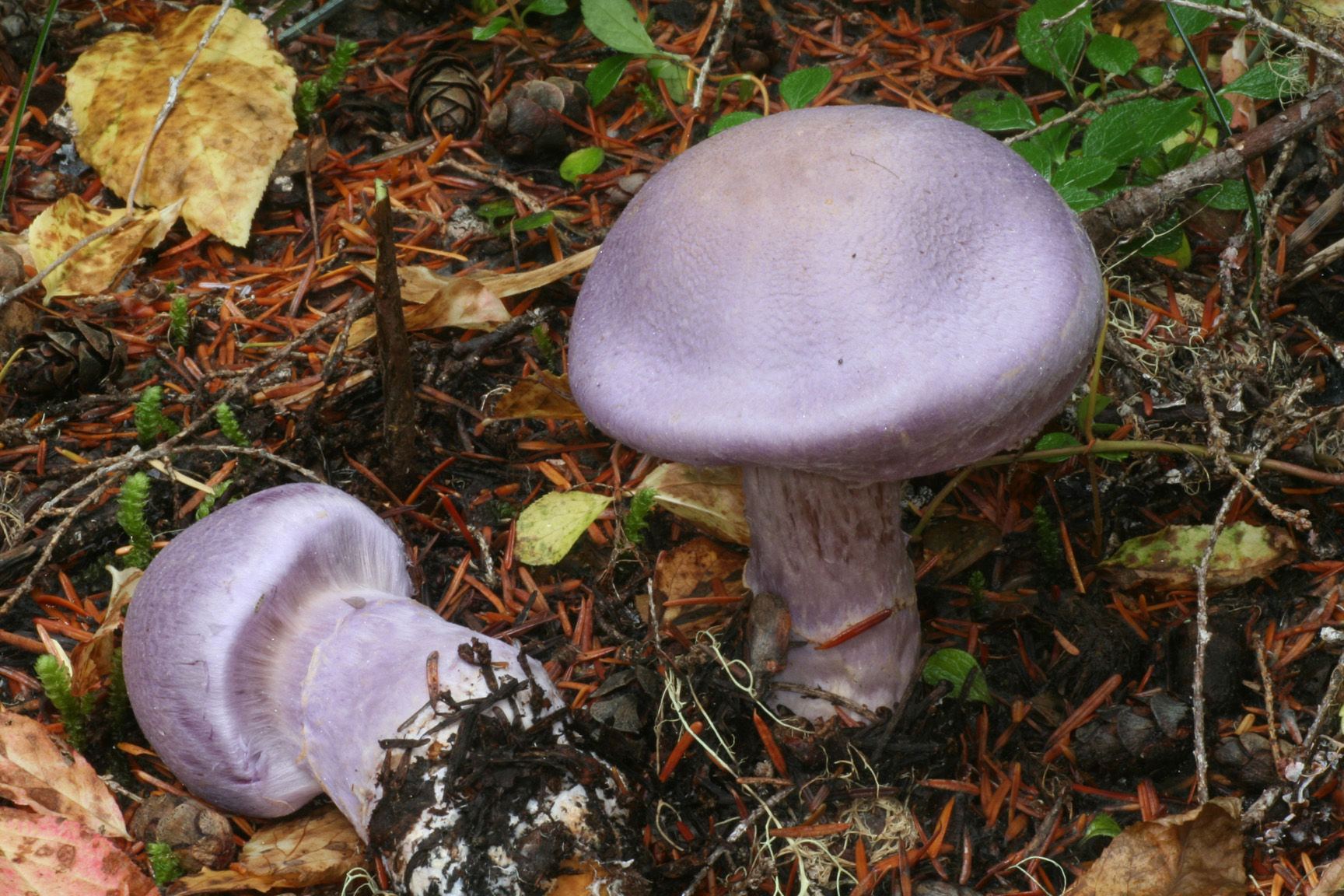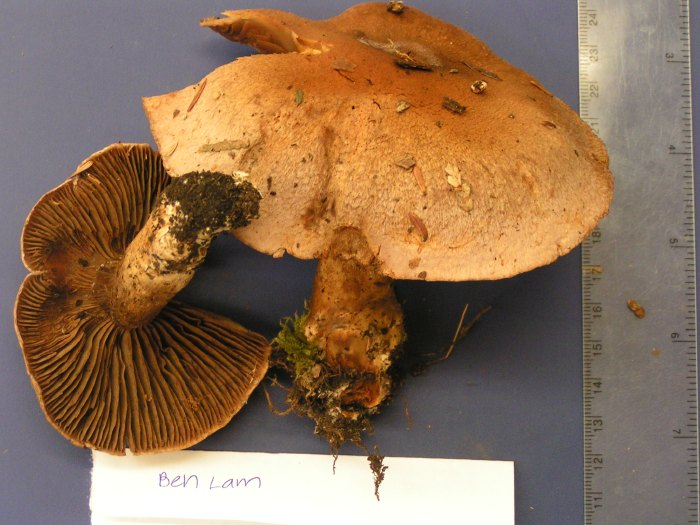Cortinarius traganus — Lilac webcap, gassy webcap
Left image: Lilac webcap1,2, photograph by Adolf Ceska.
Right image: Lilac webcaps8 also come in brown, as shown here.
Odour: Fruity, pear-like when young, strong and unpleasant when old.
Taste: Slightly sour (take a quick nibble of a pea-sized piece, then spit it all out.)
Cap: 4–11 cm in diameter, hemispherical with rounded top when young, expanding with age to convex and then low convex. The colour varies. In the most easily identified form of the species, the surface is vivid lilac but it can also be brown, whitish or ochre. The cap surface is dry and silky smooth or fibrillose, or in dry weather, cracked and scaly. The flesh is mottled orange-brown.
Gills: Moderately crowded, attached to the stem and sometimes notched. The colour starts out light brown and becomes darker rusty brown from maturing spores.
Stem: 4–11 cm long x 1–2 cm wide at the top, up to 3.5 cm wide at the base. Silvery or lilac fibrous remains of the universal veil cover the lower 3/4 of the stem's surface. The base of the stem develops brownish stains. Sliced open, the inner flesh is bright brown-yellow streaked, in contrast to the lilac colours of the outside of the mushroom.
Ring or veil: A lilac-coloured, thread-like cortina, the remains of a partial veil, covers the gills of young mushrooms. After the cap expands, remnants of the cortina may form a band around the top section of the stem, made visible by the rusty brown spores that get caught in its threads. Cottony remains of the universal veil form a layer of whitish or lilac fibrils that clothe the lower part of the stem and then form woolly, whitish or lilac-tinted rings around the stem.
Cup: No cup.
Spores: 7–10 x 5–6 µm, brown, with a warted surface.
Habitat: On the ground, in small groups, or solitary, associated with conifers, often with Douglas fir (Pseudotsuga menziesii), Sitka spruce (Picea sitchensis), and western hemlock (Tsuga heterophylla); ectomycorrhizal.
Geographic distribution: This is a north temperate species reported from North America and Europe.
Webcap species have rusty brown, warty spores, which often stain the fibrillose veil remnants on the stem. Most of the numerous webcap species of the Pacific northwest and BC differ only by subtle characters and are hard to identify. Of these, none are good edibles.
Symptoms: Although not yet documented from the Pacific northwest or BC, a brown-capped webcap, Cortinarius orellanosus caused kidney failure in a patient in Michigan7. Eating other kinds of webcaps has occasionally been implicated in minor gastrointestinal upsets6.
Treatment: Contact your regional Poison Control Centre if you or someone you know is ill after eating any of the webcaps. Poison centres provide free, expert medical advice 24 hours a day, seven days a week. If possible, save the mushrooms or some of the leftover food containing the mushrooms to help confirm identification.
Poison Control:
British Columbia: 604-682-5050 or 1-800-567-8911.
United States (WA, OR, ID): 1-800-222-1222.



